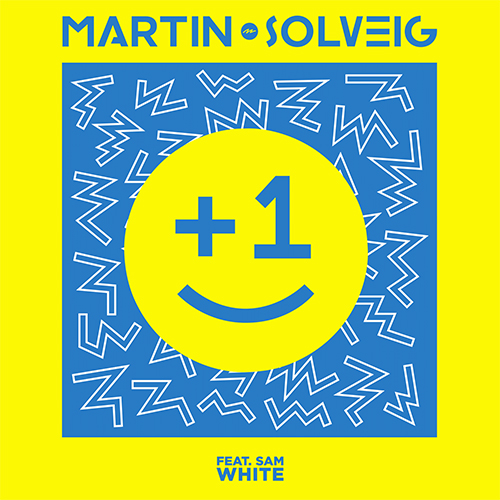-
 play_arrow
play_arrow
Clubalicious Clubalicious Radio
-
 play_arrow
play_arrow
London Calling Podcast Yana Bolder

| MIX VERDICT: ZYNAPTIQ PITCHSHIFT PRO |
| THE TAKEAWAY: “If you work in immersive formats or in sound design (even in mono/stereo), Pitchshift Pro includes the features you require. Engineers who produce music strictly in stereo will only need the tools in the less-expensive Pitchshift.” |
| COMPANY: zynaptiq • www.zynaptiq.com PRICE: Pitchshift Pro: $279; Pitchshift: $169 PROS: • Pitch and formant shifting for every application imaginable. • High-quality processing. • Relatively deep control set lets you finesse results. CONS: • Tooltips don’t always appear. |
New York, NY (January 31, 2025)—Ever wonder why your pitch shifter sounds good on some tracks but not others? Blame it on the type of algorithm it uses; some “algos” inherently sound best on drums and percussion, others excel on vocals but not drums, and still others are first-rate for sound design.
Now you can have them all. zynaptiq’s new Pitchshift Pro plugin offers six different algorithms, executing phase-synchronous processing in two (stereo) to 16 channels (for 9.1.6 multi-channel mixes). A mono/stereo-only version of the plug-in, Pitchshift, is available for less coin but offers just three algos. I reviewed the Pro version here.
BASIC INSTINCT
Pitchshift Pro has an extensive control set, but the plug-in’s basic operation is exactly what you’d expect: Adjust the large rotary Pitch Shift and Formants controls to your liking, and switch from one algorithm to another to hear which one sounds best. Activating a Link switch makes the amount of formants shift automatically track the inverse of the pitch-shift amount to preclude chipmunk and “Strawberry Fields Forever”-type effects.
Select the type of algorithm you want by clicking on one of the alphabetized buttons, labeled A through F, in the GUI’s center. (Types A, B and C are offered in the mono/stereo-only Pitchshift plug-in.) A set of parameter controls specific to the selected algo then appears at the bottom of the UI.
Algorithm Type A (Hybrid) will likely be your first choice for pitch-shifting complex tracks. Mouse-drag its stepped Signal Type control, and groups of invisible parameters are adjusted to optimally process one of four types of sources: sound effects, drums, full mixes (or any track containing a mix of transients and sustained sounds), and harmonically rich sources such as a full orchestra producing few transients. Each of the four Signal Type settings has an independent Transients control that you can adjust to better preserve— or completely eliminate—transients in the wet signal.
The Type A algo’s Dispersion control acts on the sustained signal (all but the transients), adding random modulation to its spectrum; low settings for this control create a larger—potentially huge— soundstage in multichannel applications, whereas high settings diffuse and move the sound subtly into the background.
Clicking on the Settings button—it looks like a knurled knob— opens a panel with four additional controls that respectively activate double-precision (64-bit floating point) resolution, adjust the crispness of the sound, improve time resolution for high frequencies (transients), and progressively emphasize formant frequencies. Each has tradeoffs, such as increased CPU load.
The Type B (Resynth) algorithm trades snappy reproduction of transients for a smoother, warmer sound with very few modulation artifacts. Activating either of a couple Quality settings lends a punchier sound, but at the expense of higher CPU load. A multi-way Punch Boost control also adds attack to the resynthesized signal; its highest setting may add distortion when used on bass-y tracks. The Jitter control adds random pitch modulation to each channel’s wet signal (think chorus effects).
The Type C (Stretch) algorithm is an enhanced implementation of zynaptiq’s ZTX Pro time/pitch technology (licensed by MOTU for Digital Performer, among others). It’s best used when shifting complex program material by a moderate amount, such as when making framerate conversions in sound for film. This algo has two alternative modes that affect timing precision.

SPEAK UP
1970s-era pitch shifting comes alive again in Pitchshift Pro’s Type D (Granular) algorithm, this time with modern improvements that reduce the comb filtering and echoing of transients that plagued those algos used by early samplers. Speech is a good candidate for Type D. Drums and other sources with loud and repetitive transients, not so much. A three-way Mode switch gives you two variations on zynaptiq’s modern take, while a third selection takes you fully back to the future, warts and all.
LPC, the Type E algorithm’s nom de guerre, stands for Linear Predictive Coding, which some telecom codecs use for speech synthesis. You may be tempted to try to pitch-shift a lead vocal or other monophonic, pitched sound using this unpredictable algo, but forget about it—zynaptiq includes it for you to mangle anything and everything but. Think sci-fi!
Type E’s Formants control has an extended range of ±24 semitones. The Looseness control adds noise to the algo’s oscillator. If some notes are dropped or jump an unwanted octave in the wet sound, adjust the Range control to optimize the algorithm’s pitch detection. Tweak the Sensitivity control to alter the balance of pitched and unpitched components (such as breath noises), turning full-throated speech into sandpapery whispers, for instance.
The Type F (Conform) algorithm is the straitjacket of the lot, forcing the input sound to reproduce only one specific pitch, which you select using the Pitch control. Sound design again comes to mind. Click on the Mode button to select the Resynth or LPC engine for conforming the pitch; the Formants(-shift) control has a range of ±24 semitones with either selection.
Negative values for the Deviation control adjust how strongly the processed sound conforms to your selected pitch, whereas positive values introduce pitch randomization. Quality and Noisiness controls—displayed in the UI with selection of the Resynth and LPC engines, respectively—perform similarly to the algorithmic Type B Quality and Type E Looseness controls.
After Pitchshift Pro shifts the pitch and/or formants of your track, the processed signal passes through user-adjustable highpass and lowpass filters and a Dry/Wet (mix) control. Bypass, mute and solo buttons are provided for each channel in a stereo or multichannel setup. MIDI Learn functionality and related interoperability are extensive: You can control Pitch Shift, Pitch and Formants values using MIDI Notes and pitch bend; adjust MIDI parameters’ response curves; delimit the functional range of controls; load presets using MIDI triggers; and more.

MAN AT WORK
Pitchshift Pro’s algorithm A produced a monster sound, shifting drums’ pitch and formants down a full octave. Boosting the Transients and (in the algo’s Settings panel) Formant Strength controls made the sound crisper, compensating for the smearing effect of nose-diving the formants. I could usually get away with shifting a full stereo pop mix up or down two or three semitones with this algo before phase, timbre and vocal/instrument imbalances became too objectionable. While you’ll only want to manhandle demo recordings this way, Pitchshift Pro met the acid test with respectable fidelity.
Shift-dragging the Pitch Shift control up six cents using algorithm B, and lowering the Dry/Wet control to 21% wet, lent a beautiful chorus effect on electric piano. I deliberately switched the Quality control to Fast (lowest quality) and bypassed the Punch Boost control to de-emphasize transients in the wet signal for a creamier sound. Algorithm B also sounded great when adding a hint of perfect-5th shift to a lead vocal—ear-candy sweetening.
H2 Audio Helios 5011 — A Mix Real-World Review
I produced a wide variety of sound-design effects using the Type E and F algorithms on dialog tracks. With different control settings, the Type E algo transformed the speaking talent into a Star Wars-like droid, deranged spirit or gargantuan monster, maintaining good pitch tracking even with a one-octave shift higher or lower.
Both of the Type F algorithm’s modes did a truly remarkable job constraining a dialog track to voice only one pitch. LPC mode produced a much clearer track than Resynth mode, but each had a distinctive sound useful for radical sound design (always incurring very audible phasing). An extreme boost of the Deviation control, in either mode, produced sounds similar to whispering and glottal frying, while plunging the control increased phasing and added an electronic overtone to the voice.
My only complaint about Pitchshift Pro’s operability is that I often had to move my mouse over a control many times before the plug-in’s tooltips (textual help) popped up.
If you work in immersive formats or in sound design (even in mono/stereo), Pitchshift Pro includes the features you require. Engineers who produce music strictly in stereo will only need the tools in the less-expensive Pitchshift. Either way, you can’t go wrong!
Written by: Admin
Similar posts
Recent Posts
- 🎶 New Music: JID, OneRepublic, Morgan Wallen, Post Malone, MarkCutz, Kidd Spin + More!
- Classic Tracks: The Fireballs’ “Sugar Shack”
- Classic Tracks: Arlo Guthrie’s “City of New Orleans”
- Classic Track: k.d. lang’s “Constant Craving”
- Classic Tracks: Waylon Jennings’ “Are You Sure Hank Done It This Way”
Recent Comments
No comments to show.Featured post

Latest posts

🎶 New Music: JID, OneRepublic, Morgan Wallen, Post Malone, MarkCutz, Kidd Spin + More!

Classic Tracks: The Fireballs’ “Sugar Shack”

Classic Tracks: Arlo Guthrie’s “City of New Orleans”

Classic Track: k.d. lang’s “Constant Craving”

Classic Tracks: Waylon Jennings’ “Are You Sure Hank Done It This Way”
Current show

Stereo Productions
Chus Ceballos
Stereo Productions is synonymous with exciting electronic music today. The label has emerged as the figurehead of the hugely prolific Spanish electronic music scene.
closeUpcoming shows

Beat Life Matters
Beat Life Matters
21:00 - 22:00
Love To Be
The Global Connection
00:00 - 02:00
Fresh Is Fresh
THIS WEEKS HOTTEST DANCE RELEASES FROM DEE JAY PROMOTIONS
02:00 - 07:00
Stardust
Bergwall
07:00 - 08:00
Norwegian Dance Chart
Top 40 Hottest Tracks in Norway
09:00 - 11:00Chart







